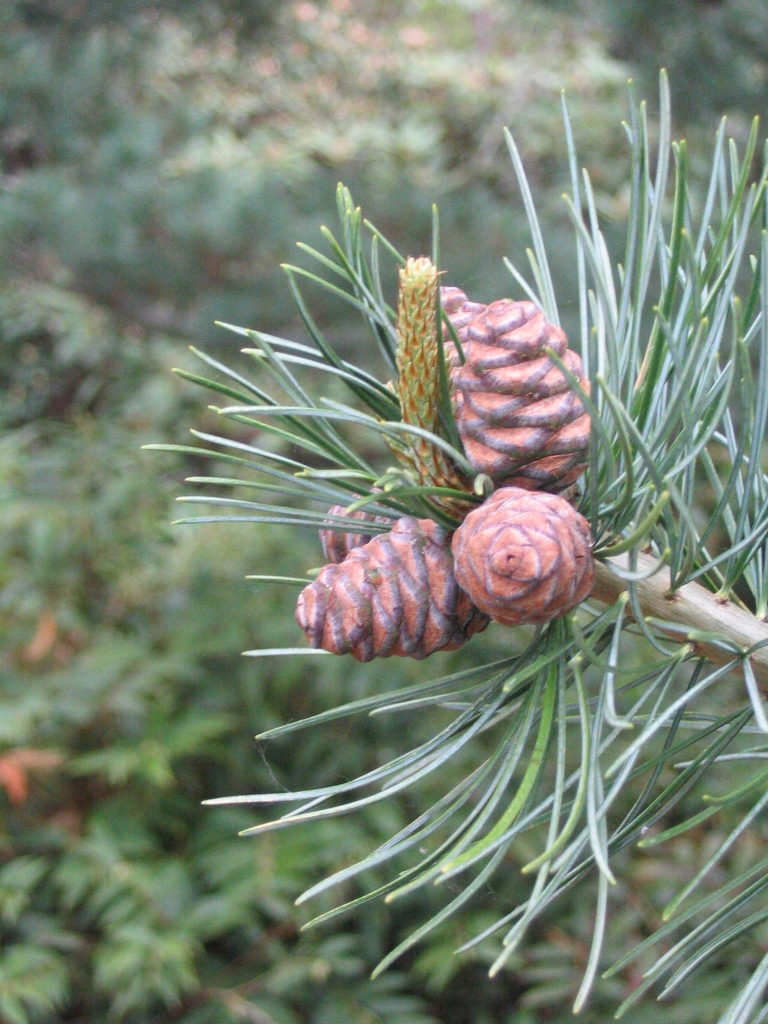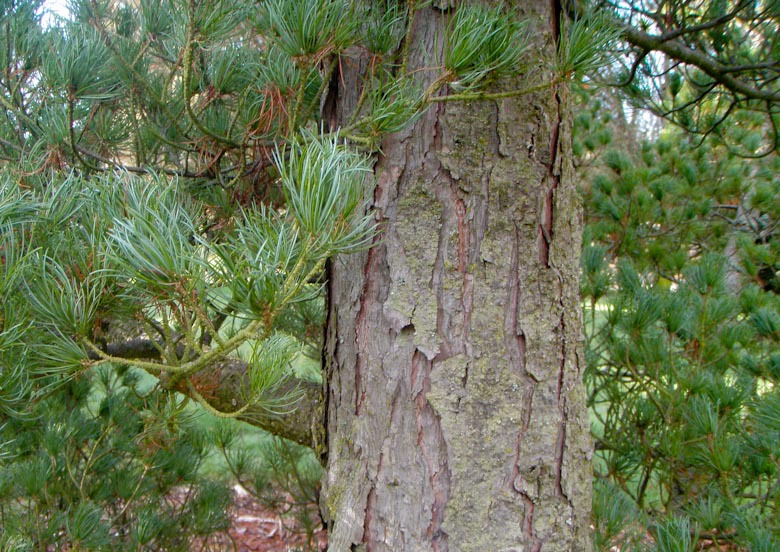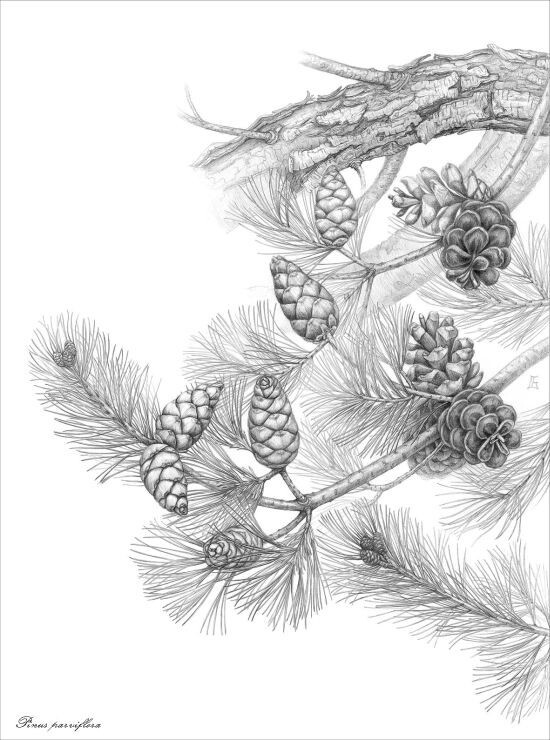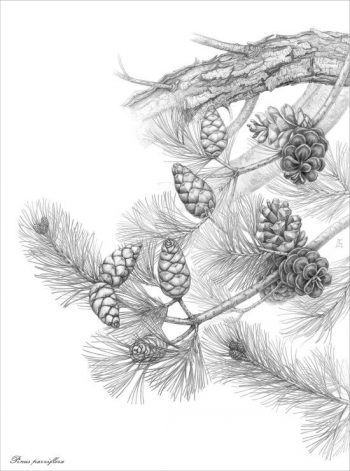
subgenus Strobus (Lemmon), section Quinquefoliae (Duhamel), subsection Strobus (Loudon).
Pinus parviflora, first described in 1842 by Philipp Franz von Siebold (1796-1866) et Joseph Gerhard Zuccarini (1790-1848), is commonly known as Japanese white pine; as well as ゴヨウマツ (Hime ko matsu, or Goyo matsu) in the Japanese language. The species is named for its unusually small seed cones; parviflora is Latin for "small flower."
Ethnobotany. It is a common ornamental, and a popular tree for bonsai. It was introduced to England in 1861 by John Gould Veitch and has become quite popular in English gardens.
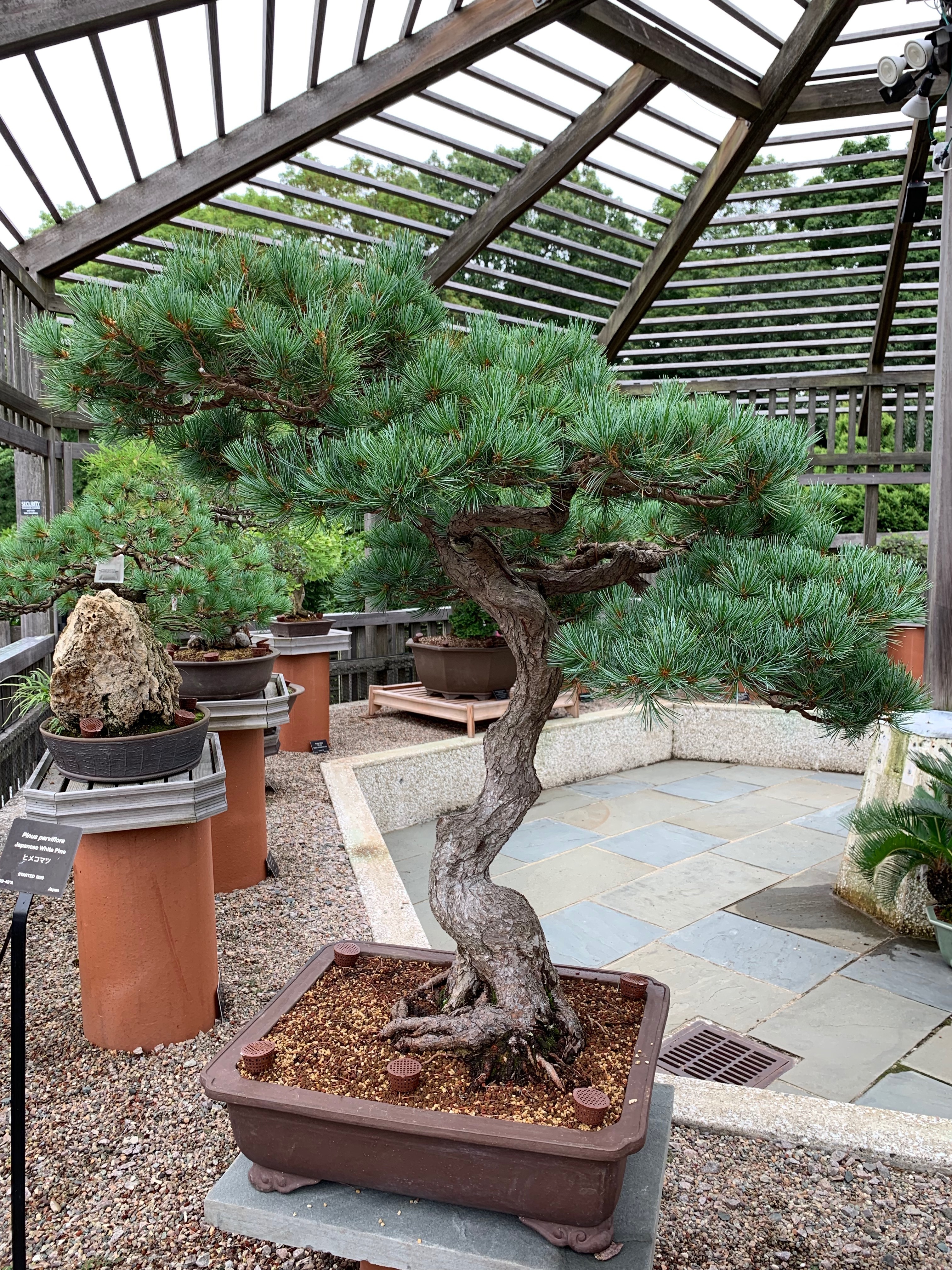
Description. Japanese white pine is an evergreen, coniferous species of tree that grows to mature heights of 80 feet (25 m) with a massive, straight (sometimes split into two or more stems), trunk up to 40 inches (100 cm) in diameter, measured at breast height; and an irregular crown that flattens in old trees.
Pinus parviflora has been used in the art of Bonsai for centuries, particularly plants selected with shorter-than-typical needles. The specimen on the left is on display at the Arnold Arboretum, Boston, Massachusetts. It has been in training 1899 and shipped to the U.S. from Japan in 1913 to the Honorable Larz Anderson, who purchased a collection of bonsai while serving as US ambassador to Japan. The entire collection was donated to the Arnold Arboretum; this one was accessioned in July of 1949.
This conifer's origin was Yokohama Nursery Company, Yokohama, Japan via Mr. Larz Anderson, Brookline, MA, United States.
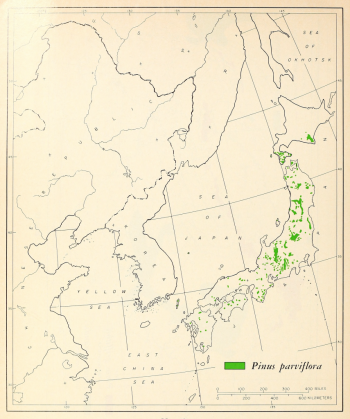
Distribution. This species is native to Korea (Ullung island) and Japan. Type variety is in west-central Honshu (southward from Fukushima Prefecture, mainly on Pacific Ocean side), Shikoku and Kyushu, growing at elevations of 750 to 6,000 feet (200 - 1800 m) above sea level. Var. pentaphylla is in southern Hokkaido and north to central Honshu (in central Honshu mainly on Japan Sea side), growing on sunny rocky slopes at elevations of 200 to 2,500 feet (60 - 800 m) above sea level in Hokkaido, and 1,000 to 8,000 feet (300 - 2500 m) in Honshu. This and P. koraiensis are the characteristic pines of subalpine areas of Japan; these two conifers probably covered much of the Honshu coastal area during the Pleistocene.
Hardy to Zone 5 - cold hardiness limit between -20° and -10°F (-28.8°C and -23.3°C).
